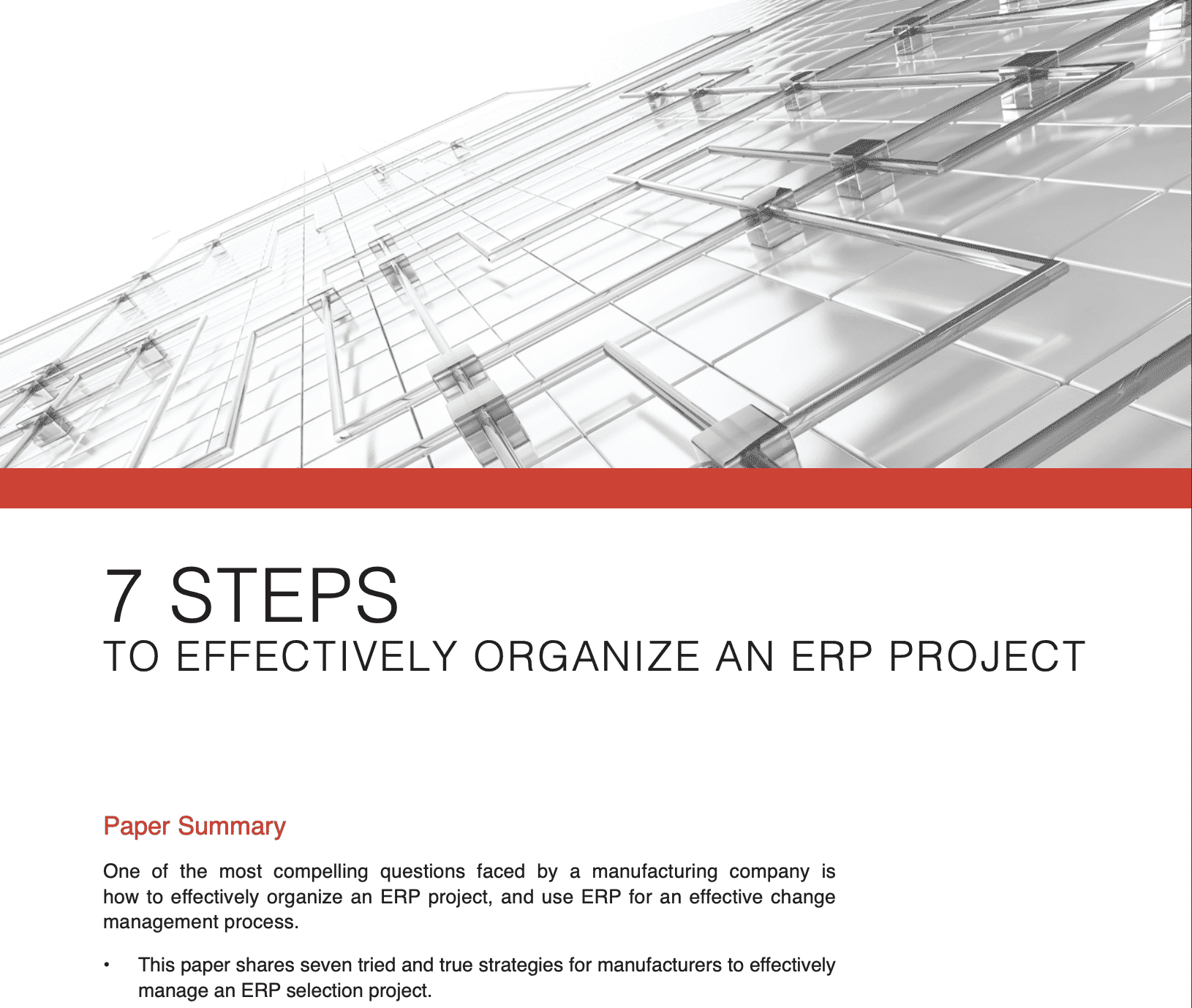From our 25 years of experience as an ERP consulting firm, we know full well that an integrated ERP system is what manufacturers and distributors need to maintain a competitive edge and reduce costs in the 21st century.
What are the pitfalls we often see when an ERP system is not fully integrated?

Enterprises are leaving ROI on the table when fear of the cost of investment keeps them from integrating systems together to streamline all operations and processes. Moreover, they don’t have the visibility that adds strategic accuracy into operations, an acute understanding of customer preferences and requirements, and insight into possible efficiencies. Our business improvement consultants report scenarios from the field where enterprises with poorly implemented integration have fulfillment delays and sloppy order processing, a lack of visibility, and flawed decision-making based on obsolete data.
An integrated ERP system gives a full accounting of inventory, shipping, quality, orders, payments – in short, a total and accurate real-time picture of the shop floor truth
5 Signs You Need an Integrated ERP System
The role of an ERP consultant is to deliver independent, unbiased guidance to manufacturers and distributors as they look to achieve streamlined operations and reduced costs. From that guidance, we have assembled 5 telling signs that you need an integrated ERP system.
1. Your enterprise relies too much on manual spreadsheets
A common problem we help our clients solve is their over-reliance on Excel spreadsheets. They are error-prone and easily corrupted, lack appropriate version control, lack consistency from one department to the next making them less useful, and often are duplicated by departments spending time and resources creating spreadsheets another department has already drafted.
Spreadsheet are cheap and relatively easy to use but come with many costs. A spreadsheet cannot maintain the complexities and best practices necessary, for example, for strategic supply chain management, inventory-based replenishment, production planning, and other processes in the enterprise. They mask the data visualization and real-time intelligence enterprises so desperately need.
2. Functional areas use siloed, standalone systems
When we see enterprises with standalone systems that can’t communicate with each other, we know that the ERP project team needs to connect all systems together to gain operational efficiency.
Without integrated ERP, manufacturers and distributors cannot properly track production, inventory, quality, ordering or other operations
Enterprises working with multiple standalone systems and siloed data that’s inaccessible face duplicate data entry processes that are often manual and ripe for errors, a lack of visibility, and obsolete reporting and forecasting. Without an integrated ERP system, manufacturers and distributors cannot properly track production, inventory, quality, ordering or other operations – they are introducing opportunities for waste and manual errors.
Standalone applications keep data from flowing properly throughout the enterprise because disparate versions of intelligence are used upstream or downstream.
3. You can’t trust your data
Without an integrated ERP system, many manufacturers are making crucial business decisions based on inaccurate and obsolete data that needs manual consolidation and manipulation. Multi-million dollar forecasting and decision-making based on untrustworthy data is a recipe for disaster. The total amount of data and information produced on the shop floor can’t be trusted when it comes from standalone, legacy systems that are not integrated.
Actionable operational intelligence is critical for decision-making in an efficient manufacturing or distribution organization.
4. You can’t monitor reports or data in real-time
Manufacturers and distributors live or die on real-time visibility into their entire operations to monitor productivity, solve bottlenecks, and respond to customer requirements, not to mention make time-sensitive forecasts.
Lack of an integrated ERP system that delivers real-time means that managers are hamstrung and often revert to manual workarounds to digest the enormous amount of data generated each hour on the shop floor.
Last month’s data is no substitute for data from the last hour.
When our business improvement consultants conduct a current state analysis, they often find a lack of real-time, actionable intelligence. With an integrated ERP system, real-time reporting is achievable.
5. You can’t easily see “the big picture” of enterprise performance.
Hand-in-hand with a lack of real-time, actionable intelligence and production metrics is the inability to see the entire enterprise and its performance metrics as a whole. This strategic success factor outweighs all the others.
Seeing operational metrics from an integrated system lets organizations know if they are meeting their goals in terms of productivity and costs.
For manufacturers and distributors, seeing all operational metrics from one integrated system is the only way to know if they are meeting their goals in terms of productivity and costs, among others.
Access to accurate and timely data managed by their integrated ERP system is essential. Hidden costs, production inefficiencies, costly manual workarounds, and even safety issues won’t come to light without real-time data and an all-encompassing view of the enterprise.
Supplying timely and full-picture metrics of the operation is what integrated ERP systems do. They deliver vital performance information with real-time or near-time reports and dashboards.
The Benefits of an Integrated ERP System
If your organization is experiencing any of these 5 warning signs, it’s time to consider an integrated ERP system.
The benefits of integrated ERP include better operational and performance management, reduced costs, reduction of manual errors, improved view of customer demands and buying trends, better-informed decision-making and forecasting, and real-time visibility into every facet of the manufacturing process.
7 Steps to Effectively Organize an ERP Project
The 7 Steps to Effectively Organize an ERP Project is designed for ERP project teams from today’s forward-thinking manufacturing and distribution organizations.
Read tried and true strategies for manufacturers to effectively manage an ERP selection project. See what it takes to be successful and more with this Download.

Table of Contents
More ERP material...
AI in Food and Beverage Manufacturing
Discover how AI is revolutionizing food and beverage manufacturing, enhancing quality, reducing…
How ERP for Quality Control Eliminates Manual Documentation Chaos
This post will examine why managing quality records outside of an ERP…
Assessing Your AI Maturity
This article breaks down how businesses can measure their AI maturity to…



